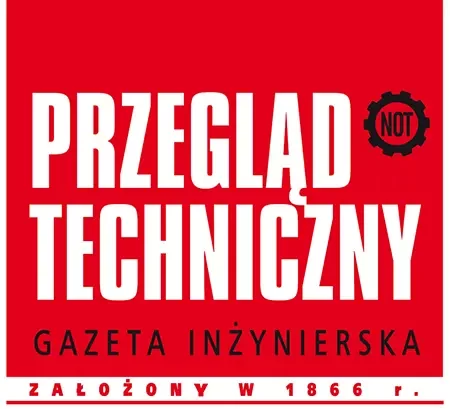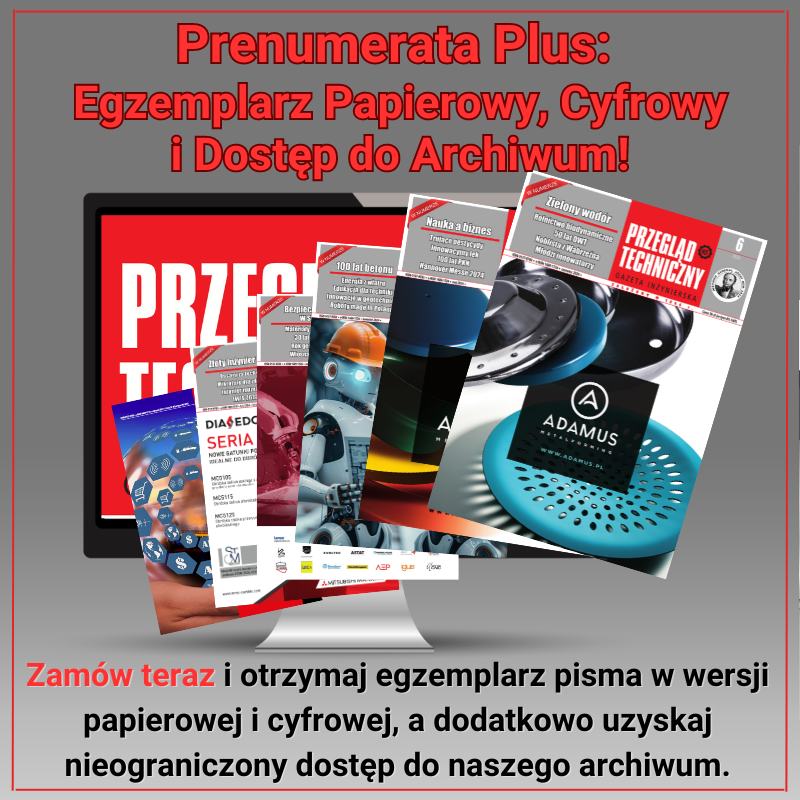Energy-Efficient Detection of Railway Wheel Defects Using Hilbert Transform-Based Vibration Analysis and Histogram Clustering
Jakub Dziedzic
Update Plus Sp. z o.o. Sienkiewicza 85/87/lok. 8, 90-057 Łódź, Poland, j.dziedzic@updateplus.pl
Rafał Melnik
Faculty of Computer Science and Technology, University of Lomza, Akademicka 1, 18-400 Łomża, Poland, rmelnik@al.edu.pl
Streszczenie
Zapewnienie bezpieczeństwa i niezawodności systemów transportu kolejowego w dużym stopniu zależy od wczesnego wykrywania i monitorowania usterek zestawów kołowych. Jeśli nie zostaną sprawdzone, niedoskonałości, takie jak płaskie miejsca na kołach, mogą zwiększyć poziom drgań, przyspieszyć zmęczenie podzespołów i doprowadzić do poważnych incydentów bezpieczeństwa. Tradycyjne podejścia do diagnozowania stanu kół często opierają się na inspekcjach wykonywanych manualnie lub sprzęcie wymagającym dużych zasobów, co może być trudne do wdrożenia w dużych flotach sieciach zarządzanych zdalnie. Artykuł prezentuje energooszczędną metodę wykrywania defektów kół kolejowych przy użyciu analizy wibracji. Wykorzystano transformację Hilberta do przetwarzania sygnałów oraz klasteryzację histogramową w celu identyfikacji nieprawidłowości. Rozwiązanie to jest bardziej efektywne energetycznie i precyzyjne w porównaniu z tradycyjnymi metodami. Skupiono się na analizie drgań jako wskaźnika stanu technicznego kół, co ma istotne znaczenie dla bezpieczeństwa i utrzymania infrastruktury kolejowej. Wyniki pokazują, że przez skupienie się na konkretach i wykorzystanie prostych, ale skutecznych analiz statystycznych, system może niezawodnie odróżniać sprawne koła od wadliwych. Przyczynia się to do opłacalnych strategii konserwacji, skraca przestoje i zwiększa bezpieczeństwo na kolei. Na koniec omawiamy przyszłe ulepszenia, w tym integrację z ramami konserwacji predykcyjnej, adaptacyjne techniki progowe i potencjalne włączenie bardziej zaawansowanych metod przetwarzania, jeśli pozwolą na to budżety energetyczne.
Słowa kluczowe: wykrywanie defektów kół kolejowych, transformata Hilberta, analiza wibracji
Abstract
Ensuring the safety and reliability of railway transport systems depends heavily on the early detection and monitoring of wheelset defects. If left unchecked, imperfections such as flat spots on wheels can increase vibration levels, accelerate component fatigue, and lead to serious safety incidents Traditional approaches to diagnosing wheel condition often depend on manual inspections or resource-intensive equipment, which can be challenging to deploy across large fleets or remote networks. This paper presents an energy-efficient, computationally lean method for detecting characteristic vibration patterns associated with common wheelset defects. The proposed approach employs the Hilbert transform to extract specific dynamic responses in time domain of vibration signals of vibration signals and then utilizes histogram-based clustering to identify deviations in peak distribution that indicate mechanical defects. Unlike more complex machine learning approaches that demand significant power and computational resources, our method is designed to operate autonomously on low-power, self-contained devices with limited external support. It achieves robust performance in a vehicle speed range of 10–40 km/h and track conditions, detecting subtle anomalies after accumulating modest amounts of data from short measurement windows. The results show that by focusing on the specific and exploiting simple but effective statistical analyses, the system can reliably differentiate healthy from defective wheels. This contributes to cost-effective maintenance strategies, reduces downtime, and enhances railway safety. Finally, we discuss future improvements, including integration with predictive maintenance frameworks, adaptive thresholding techniques, and potentially incorporating more advanced processing methods if energy budgets allow.
Keywords: railway wheel defect detection, Hilbert transform, vibration analysis
Literatura
[1] Gutierrez-Carvajal R. E., Betancur G. R., Barbosa J., et al. “Full scale fatigue test performer to the bolster beam of a railway vehicle”. International Journal of Interactive Design and Manufacturing – IJIDEM, Vol. 12, Issue 1, 2018; p. 253–261.
[2] Duer S., Scaticailov S., Paś J., Duer R., Bernatowicz D. “Taking decisions in the diagnostic intelligent systems based on information from an artificial neural network”, 22nd International Conference on Innovative Manufacturing Engineering and Energy MATEC Web of Conferences 2018; (178): 1–6.
[3] Ortiz J. O., Betancur G. R., Gomez J., et al. “Detection of structural damage and estimation of reliability using a multidimensional monitoring approach”. Proceedings of the Institution of Mechanical Engineers Part F – Journal of Rail and Rapid Transit, Vol. 232, Issue 4, 2018; p. 1021–1032.
[4] Dziula P., Paś J. “Low Frequency Electromagnetic Interferences Impact on Transport Security Systems Used in Wide Transport Areas”, TransNav the International Journal on Marine Navigation and Safety of Sea Transportation 2018; 12(2): 251–258.
[5] Staśkiewicz T, Firlik B, Kominowski J. “Out-of-round tram wheels – Multibody simulation study based on measured wheel rim geometry”. Proceedings of the Institution of Mechanical Engineers, Part F: Journal of Rail and Rapid Transit. 2022;236(1):122-133. doi:10.1177/0954409721994036
[6] Krzykowski M., Paś J., Rosiński A. “Assessment of the level of reliability of power supplies of the objects of critical infrastructure”, IOP Conf. Series Earth and Environmental Science 2019; 1–9.
[7] Stawowy M. “Model for information quality determination of teleinformation systems of transport”, In: Proceedings of the European Safety and Reliability Conference ESREL 2014 CRC Press/Balkema; 2015; 1909–1914.
[8] Bargmann, V. “Irreducible unitary representations of the Lorentz group”. Annals of Mathematics, 48(3), 568-640, 1947,.p. 13–22.
[9] Konieczny Ł., Warczek J., Młynczak J., Zawisza M. “Free vibration method for technical condition assessment of automotive shock absorbers”. Diagnostyka, Vol. 18, 2017; p. 47-53.
[10] Zima B., Rucka M. “Elastic wave propagation in diagnostics of self-drilling system of grouted anchors”. Diagnostyka, Vol. 18, 2017; p. 31–36.
[11] European Directive 2002/44/EC on the Minimum Health and Safety Requirements Regarding the Exposure of Workers to the Risks Arising from Physical Agents (vibration). European Commission, 2002.
[12] Klimczak T., Paś J. “Selected issues of the reliability and operational assessment of a fire alarm system”, Eksploatacja i Niezawodnosc – Maintenance and Reliability, Vol. 21, No. 4, 2019; p. 553–561.
[13] Bezin Y., Iwnicki S. D., Cavallett M. “The effect of dynamic rail roll on the wheel-rail contact conditions”. Vehicle System Dynamics, Vol. 46, Issue 1, 2008; p. 107–117.
[14] Burdzik R., Konieczny Ł., Warczek J., Cioch W. “Adapted linear decimation procedures for TFR analysis of non-stationary vibration signals of vehicle suspensions”. Mechanics Research Communications, Vol. 82, 2017; p. 29–35.
[15] Ziqiang X., Shihuib L., Xiaoqing D., Weihua M. “Study on longitudinal vibration of wheel/rail contact and its implications for wheel polygonization”. Journal of Advances in Vehicle Engineering, Vol. 3, Issue 1, 2017; p. 22–28.
[16] Johansson A., Andersson C. “Out-of-round railway wheels – a study of wheel polygonalization through simulation of three-dimensional wheel-rail interaction and wear”. Vehicle System Dynamics, Vol. 43, Issue 8, 2005; p. 539–559.
[17] Burdzik R. “Novel method for research on exposure to nonlinear vibration transferred by suspension of vehicle”. International Journal of Nonlinear Mechanics, Vol. 91, 2017; p. 170–180.
[18] Yang Y.-b., Hung H.-h. “Wave Propagation for Train-Induced Vibrations: a Finite/Infinite Element Approach”. World Scientific, 2009; p. 492.
[19] Auersch L. “Theoretical and experimental excitation force spectra for railway induced ground vibration: vehicle-track-soil interaction, irregularities and soil measurements”. Vehicle System Dynamics, Vol. 48, 2010; p. 235–261.
[20] Melnik R, Koziak S, Dižo J, Kuźmierowski T, Piotrowska E, “Feasibility study of a rail vehicle damper fault detection by artificial neural networks”. Eksploatacja i Niezawodnosc – Maintenance and Reliability 2023: 25(1) http://doi.org/10.17531/ein.2023.1.5
[21] Paś J., Rosiński A. “Selected issues regarding the reliability-operational assessment of electronic transport systems with regard to electromagnetic interference”, Eksploatacja i Niezawodnosc – Maintenance and Reliability, Vol.19, No. 3, 2017; pp. 375–381.
[22] Babishin V., Taghipour S. “An algorithm for estimating the effect of maintenance on aggregated covariates with application to railway switch point machines”. Eksploatacja i Niezawodnosc – Maintenance and Reliability, 21(4), 2019; p. 619–630.
[23] Hu Y., Wang S., Ai X. “Research of the Vibration Source Tracking in Phase-Sensitive Optical Time-Domain Reflectometry Signals Based on Image Processing Method”. Algorithms, 11(8), 2018; p. 1–16.
[24] Konowrocki R., Chojnacki A. “Analysis of rail vehicles’ operational reliability in the aspect of safety against derailment based on various methods of determining the assessment criterion”. Eksploatacja i Niezawodnosc – Maintenance and Reliability, 22(1), 2020; p. 73–85.
[25] Feldman M. “Hilbert transform in vibration analysis”. Mechanical Systems and Signal Processing, 25, 2011; p. 735–802.
[26] Feldman M. ”Time-varying vibration decomposition and analysis based on the Hilbert transform”. Journal of Sound and Vibration, 295, 2006; p. 518–530.
[27] Feldman M. Hilbert Transform Applications in Mechanical Vibration. Wiley, 2011.
[28] Gawędzki W. „Modelowanie obrazów modułów krótkookresowej transformaty Fouriera sygnałów odkształceń i drgań rurociągu oraz podłoża funkcją Gaussa”. Pomiary, Automatyka, Kontrola, 59(4), 2013; p. 308–311.
[29] Feldman M. “Hilbert transform in vibration analysis (review)”. Mechanical Systems and Signal Processing, 25, 2011; p. 735–802.
[30] Morhain A., Mba D. “Bearing defect diagnosis and acoustic emission”. Proceedings of the Institution of Mechanical Engineers, Part J: Journal of Engineering Tribology, 217(4), 2003; p. 257-272.
Artykuł przedstawia wyniki projektu badawczo-rozwojowego, współfinansowanego ze środków Unii Europejskiej w ramach Europejskiego Funduszu Rozwoju Regionalnego (umowa o dofinansowanie nr POIR.04.01.04-00-057/17-00), którego celem było opracowanie systemu monitorującego stan techniczny wagonów kolejowych.

—————————————————————————————————-
Oryginalny artykuł ukazał się w języku angielskim w czasopiśmie Polish Technical Review No. 4/2024, DOI: 10.15199/180.2024.4.6.




